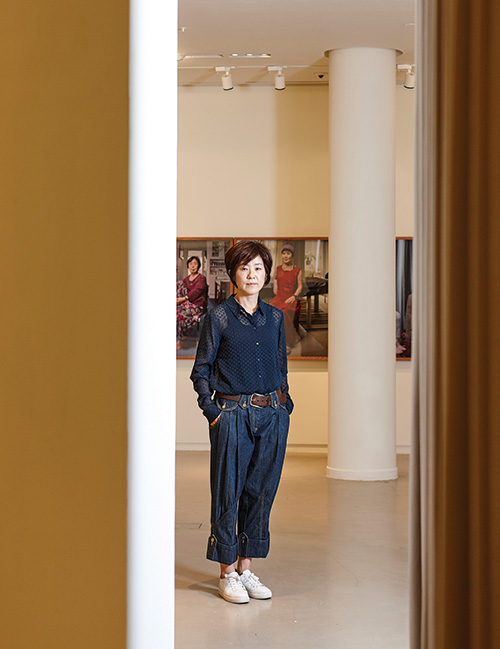
Kim Oksun. Photoⓒ Kiyong Nam
Photography is in some ways a self-contradicting medium. Full of curiosity yet ruthless, ignited in a moment yet striding into eternity. Photography acknowledges its aspirations and shortfalls. It longs to capture the whole through the part and may not be the whole in the absolute sense. Its aspiration is bound to failure. Despite the inevitable failure, photography persists in capturing the eternity of a moment. Perhaps photography was never about success, but the reiterative failures that trace the subject, to provide a glimpse into the greater whole. That is to say, perhaps we are misinterpreting that inevitable temporality as the be-all and end-all of photography. In that sense, photography is self-defeating (or in self-denial) before the inevitable passing, almost straight forward in its confession of where it will let down the subject. At times, the gaze is lost, or curiosity is wasted before the subject can be fully grasped. Sometimes, the beholder holds back in fear of exaggerating or downplaying the subject.
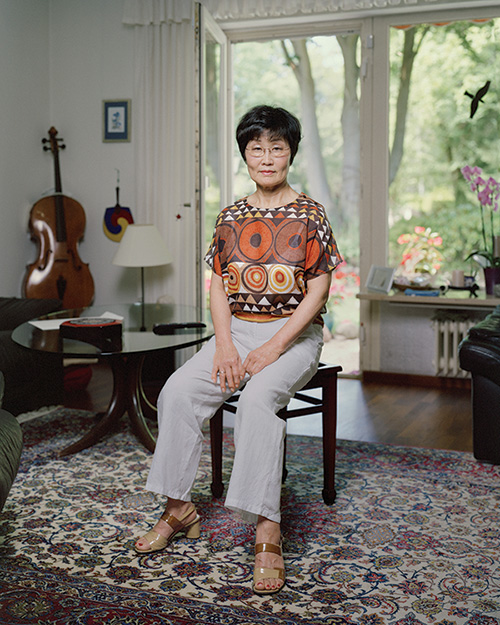
Kim Oksun, 〈BNP_8709CZ〉, 2018. Digital C-print, 150×120cm. ⓒKim Oksun.
Kim Oksun's lens finds specific subjects. 〈Woman in a Room〉 (1996-2001) was a gaze upon the nudes of ordinary women, 〈Happy Together〉 (2002-2005) was a gaze upon Korean women married to non-Koreans. 〈Hamel's Boat〉 (2008) and 〈No direction Home〉 (2010) looked at foreigners living on Jeju Island. 〈The Shining Things〉 (2014) was an interesting shift to alien plant species to the Jeju fauna, mostly palm trees. 〈Berlin Portraits〉 (2018) is Kim's latest work presented at Atelier Hermes. She looks at the Korean diaspora in Germany, the Korean nurses who were sent to Germany in the 1960s, who moved more than half a century ago and continue to do so as foreigners in a foreign land. All of the subjects in her viewfinder are relevant to Kim's person and life. She lives in Jeju. She married a foreigner. Her thoughts are very much about her own person; female-ness, marriage, migration, and what it means to be foreign. As such, Kim chooses subjects as an embodiment of her ontological ponderings and questions, while her approach to the subjects is a means of seeking balanced thought.
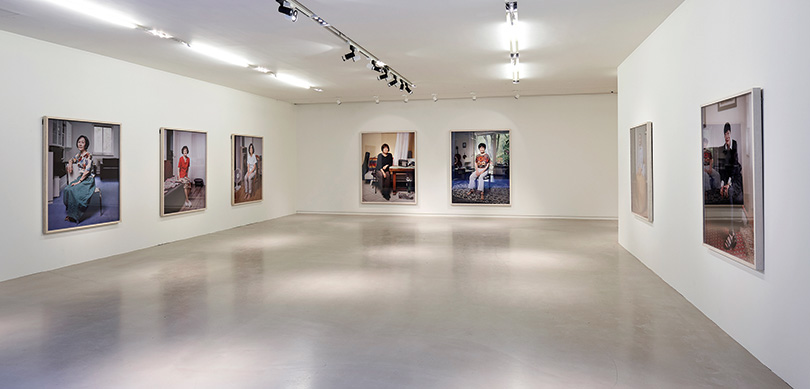
Exhibition view of 《Berlin Portraits》. Photoⓒ Kiyong Nam
The artist gazes upon the subject as an observer rather than as a fabricator. Sparked by questions derived from her own life, Kim's works explore the lives of others similar to her own, at some moments to sympathize and understand, while at other moments just observing through wary or curious eyes. Her unspurred gaze full of curiosity perceives things as-is, relaxed and almost in a meditative state. The female body, loving couples, immigrant life; most of Kim's works photograph subjects without exaggeration in their natural state in their actual place of residence, almost like a typological image. The focus is on existing reality rather than felt emotions; what is given by the actual, rather than by judgement. There is no apologetics with perspective nor is there a particular retelling of history. There is an objective, ostensive tone to the image conveyed. Of course, the photographs are more than ostensive; there is the reversal of the gaze on the female body, the gap that appears not to be bridgeable, the fantasy and prejudice of foreigners, all of which come across as sober, almost dispassionate in their telling. Yet even the rumpling of these sensibilities come across naturally, unaffected like an ambient breeze.
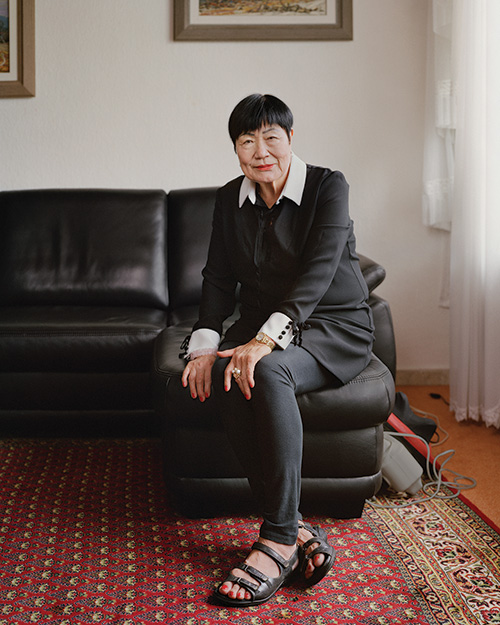
Kim Oksun, 〈BNP_8630BK〉, 2018. Digital C-print, 125×100cm. ⓒKim Oksun.

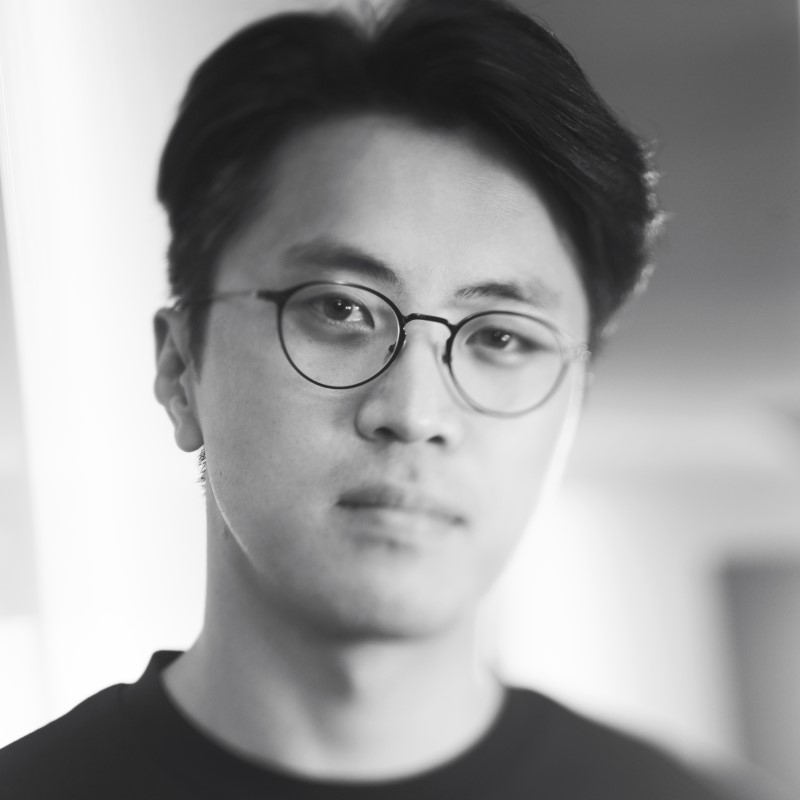
Hyukgue Kwon
Independent curator


